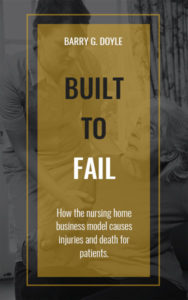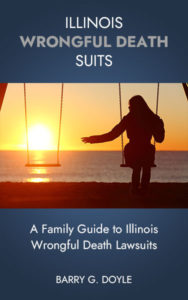The Illinois Department of Health has cited and fined Harmony Palos when staff failed to follow proper fall prevention procedures during routine care, resulting in a 94-year-old resident falling and sustaining a fractured hip. The facility also failed to accurately report the incident, with conflicting accounts from staff about whether the resident actually fell to the floor or was prevented from falling.
The resident in question, who had multiple health conditions including congestive heart failure, chronic kidney disease, lymphedema, and hypertension, was classified as high risk for falls and required assistance with basic movements like rolling in bed.
The incident occurred during morning care when a Certified Nursing Assistant was attempting to reposition the resident in bed. However, the exact details of what happened became the subject of conflicting reports from staff. The initial progress note stated that “the aide witnessed resident attempting to roll off the bed, grabbed her by both legs and pulled her up into the bed.” The resident immediately complained of pain and was given pain medication. A doctor who was in the building ordered X-rays to the right femur and right knee., which revealed “lucency across the intertrochanteric neck and lesser trochanter concerning for an acute intertrochanteric femoral neck fracture.”
However, the facility’s final incident report told a different story, stating that “the CNA inadvertently overturned resident’s right leg which resulted in the resident falling out of bed and on the floor.” This created a significant discrepancy about whether the resident actually fell or was caught before hitting the ground.
When investigators spoke with the resident directly, she provided her own account of what happened. The resident stated “I fell, they (staff) change your diaper and they tell you to roll go ahead keep rolling and that’s when I fell on the floor.” When asked how staff responded, she replied “I think they (staff) just picked me up and put me back in bed, it happened so fast.”
The resident’s family member confirmed ongoing safety concerns, telling investigators “There needs to be 2 people when changing her. She can’t move on her own.” When asked if side rails had been installed after the fall, the family member responded “No, I don’t see any.”
Investigation revealed multiple failures in the facility’s fall prevention protocols. Despite being assessed as high risk for falls, the resident did not have proper assistive devices in place. When investigators observed the resident’s room, “an assistive device (ie: side rails, trapeze) for turning and repositioning was not in place.” Staff members appeared confused about fall prevention measures, with one CNA stating she was “unsure” about the resident’s fall prevention interventions.
The nursing assistant who was allegedly involved in the incident provided yet another version of events through a written statement. She claimed that “during morning care when I was rolling the resident back over, her leg went over the edge. I grabbed her pant leg and the top of her shirt to prevent her from falling. She did touch the oxygen concentrator with her head, and I told the nurse. She never fell when I took care of her.”
The Director of Nursing acknowledged the inconsistencies in the reports, stating that when she initially spoke with the resident, “she was saying that it was taking two people to give her care during the initial contact but only one person was providing care so that didn’t make sense what she was saying at that time.” The Director noted that later, “when we figured out that there was a fracture, that’s when the resident tried to explain everything… she explained that she ended up on the floor and said that it took 2 people to get her off of the floor.”
The resident’s pain level was documented as 5 out of 10, and the fracture was serious enough that surgery was recommended. However, due to the resident’s advanced age of 95, she declined the surgery as it was determined not to be in her best interest.
The Medical Director emphasized the serious consequences of not properly reporting falls, stating “Multiple things can happen if we don’t know about it. They should notify someone that something happened, if they fall they may require x-rays and we need to determine what happened. Falls can get fracture anywhere and if there’s head trauma there’s a risk of bleeding.”
The facility was ultimately cited for multiple violations including failing to follow policy procedures, failing to ensure staff safely turn and reposition residents, failing to ensure staff report resident falls, failing to ensure staff are aware of fall prevention interventions, failing to implement fall prevention interventions, failing to provide adequate supervision, and failing to ensure equipment was functioning properly.
One of our core beliefs is that nursing homes are built to fail due to the business model they follow and that unnecessary accidental injuries and wrongful deaths of nursing home residents are the inevitable result. Our experienced Chicago nursing home lawyers are ready to help you understand what happened, why, and what your rights are. Contact us to get the help you need.


